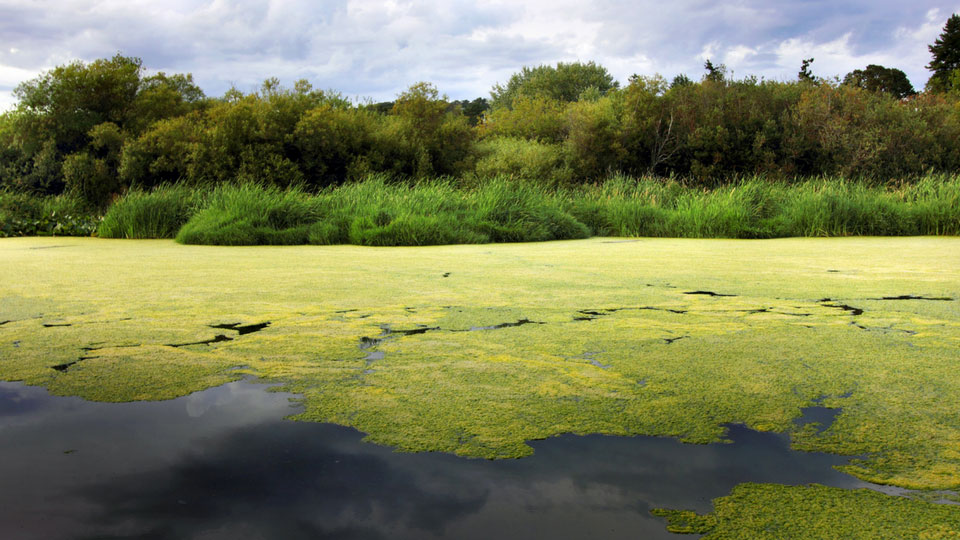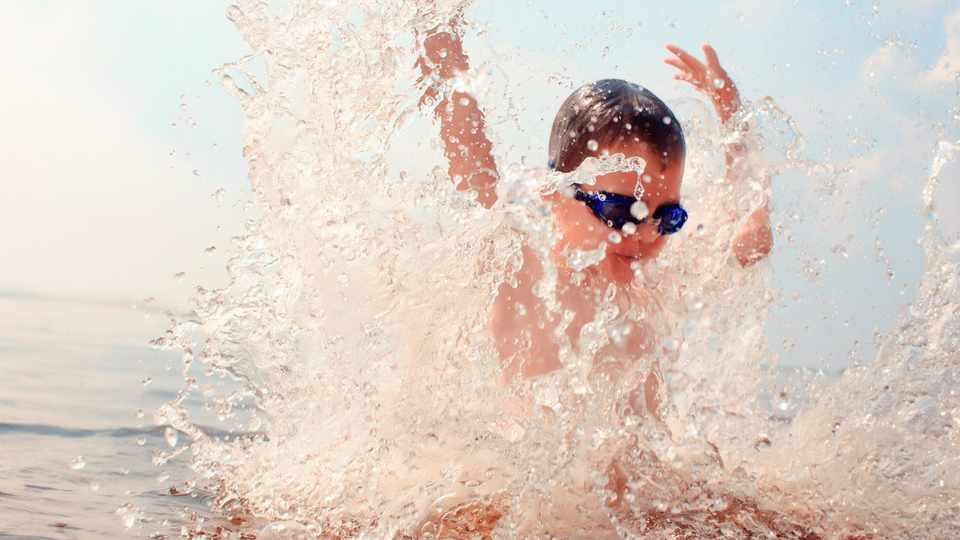The Surprising Health Risks of Oklahoma Lakes
Posted in

Oklahoma is home to more than 200 lakes and reservoirs. If you’re planning a lake trip to finish out the summer, you might want to know what’s really in the water before dipping in your toes.
Open bodies of water can easily become contaminated with germs and bacteria originating from animal waste, sewage spills, water runoff, chemicals and even human fecal matter. They aren't disinfected by chlorine like public pools, meaning as soon as you jump in, you’re exposing yourself to everything in there. In addition to germs, things like algae and electrical currents flowing underwater can also pose dangerous health risks.
How can you stay safe and healthy during your Oklahoma lake visit? We dive in (pun intended) to examine the biggest risks lurking in the water and tell you how you can avoid them.
Recreational water illnesses
The bacteria found in lake water can definitely make you sick. Recreational water illnesses (RWIs) are a group of diseases caused by swimming in bodies of water that are contaminated with germs. Simply swallowing small amounts of contaminated water, exposing your uncovered eyes or inhaling water through your nose can cause infections. RWIs manifest as gastrointestinal, skin, ear, respiratory, neurological and wound infections, but the most commonly reported symptom of an RWI is diarrhea.
Children, pregnant woman and people with weakened immune systems (such as those with AIDS, those who have received an organ transplant or those receiving chemotherapy) are most susceptible to RWIs and are more likely to become severely ill from them. One reason for this is human or animal feces in lake water can contain cryptosporidium, or crypto, a parasite that can be life-threatening for those with compromised immune systems.
Diarrhea
Swallowing water that has been contaminated with feces can cause diarrheal illnesses. The CDC estimates that the average American has about 0.14 grams of feces on their bottom which, when rinsed off while swimming, can contaminate recreational water sources. If someone is ill with diarrhea and decides to go swimming, he or she is potentially introducing millions of the same germs to the water source.
It only takes a small amount of water contaminated with feces to make you sick, so avoid swallowing lake water or getting it in your mouth. Diarrhea can be caused by germs such as crypto, E. coli, norovirus, Shigella and giardia.
Ear infections
Leaving contaminated water in your ear after swimming can cause an RWI known as “swimmer’s ear,” or otitis externa. Swimmer’s ear is not the same as the middle ear infection that is common among children. With swimmer’s ear, the infection occurs in the outer ear canal after water has sat for a long period of time, allowing bacteria to grow and infect the skin.
Symptoms of swimmer’s ear will usually appear within a few days of swimming and can manifest as itchiness inside the ear, redness and swelling, pain with pressure or pus draining from the ear. Swimmer’s ear can be avoided by using earplugs or wearing a bathing cap while swimming and drying your ears well and allowing them to completely drain after getting out of water.
Eye infections
In the same way that lake water can cause an ear infection, it can also cause infections in your eyes. If you get lake water in your eye, bacteria can grow and cause infections such as conjunctivitis (commonly called pink eye). For contact lens wearers, bacteria found in freshwater sources can cause a rare but serious eye infection called acanthamoeba keratitis (AK) that can result in permanent visual impairment or blindness. AK is caused when acanthamoeba, a microscopic ameba, infects the cornea (the outer covering of your eye).
Anyone swimming in contaminated water can develop AK, but it is most common for contact lens wearers. Symptoms include eye pain, redness, blurred vision, sensitivity to light, a sensation of something in your eye or excessive tearing. To prevent water from coming in contact with your eyes, always wear goggles when swimming.
PAM
When temperatures increase throughout the summer, an ameba known as Naegleria fowleri can multiply rapidly. Naegleria fowleri is responsible for causing primary amebic meningoencephalitis (PAM), an exceedingly rare but usually fatal disease. The ameba is found in lakes, ponds and rivers and can become overpopulated in very warm and shallow water areas. Across the U.S., 34 infections were reported in the last 10 years. In Oklahoma, a man died from the disease after swimming in a contaminated lake in 2015.
The ameba travels up the nose to the brain where it destroys brain tissue. Symptoms may initially include fever, headache, nausea and vomiting, followed by a stiff neck, seizures, hallucinations and coma. PAM cannot be spread from person to person, it can only be contracted by coming in contact with the Naegleria fowleri ameba.

Blue-green algae
There are threats lurking on the surface of Oklahoma lakes that might look harmless at first. However, blue-green algae (also known as cyanobacteria) produce toxins called cyanotoxins that are not only harmful to humans, but also fish, birds and other animals. Blue-green algae are usually found in non-harmful amounts, but on still, warm lakes, the algae can build up, causing what is called an algae bloom. Swimming during an algae bloom can result in skin rashes, eye, ear and throat irritation, asthma-like symptoms, diarrhea, vomiting, fever, muscle and joint pain, liver damage and nerve damage.
In an assessment conducted by the Environmental Protection Agency, 12 out of 55 lakes tested in Oklahoma had harmful levels of cyanotoxins. You can identify blue-green algae blooms by the distinctive blue-green colored mats of algae floating on the surface of the water. The blooms can also be red or brown in color. When the algae begin to decay, they can emit a strong, unpleasant odor. Even if you can’t see the algae bloom, but notice a strong order, that could be a sign there are large amounts of algae present.
Never swim in water with an apparent algae bloom as cyanotoxins are likely abundant. When swimming in areas without visible blue-green algae, it’s still a good idea to shower thoroughly afterward as not all algae are visible to the human eye.
TravelOK.com provides a tool for checking the current blue-green algae conditions for lakes across the state.
Electric shock drowning
Electric shock drowning occurs when a swimmer comes in contact with an electrical current flowing underwater. Both low and high-level AC currents underwater can cause skeletal muscular paralysis, preventing swimmers from being able to move or swim to safety, eventually leading to drowning. Electric shock drowning is often known as the “silent killer” because there are no visible warning signs of electricity in water. The exact number of deaths caused by electric shock drowning is unknown because there is little awareness of this phenomenon and related deaths are often attributed to the wrong cause.
For a wealth of helpful information about electric shock drowning, please read this article from Seaworthy magazine.
Although electric shock drowning can occur in any body of water, it most often occurs in lakes near marinas or docks with faulty wiring or near boats connected to a power supply. Since an electric shock can inhibit a swimmer from helping himself, it’s important to never swim alone or at night and to wear a life jacket if under the age of 13. Boat electrical systems should be regularly inspected to ensure that electricity is not escaping the boat and entering the water.
Safety tips for Oklahoma lakes
- Be careful when fishing in Oklahoma lakes. Check out the Guide to Healthy Fish Consumption in Oklahoma for more information.
- Swim in safe or designated swimming areas only. Many lakes have designated swimming areas away from heavy boat traffic areas.
- Avoid swallowing lake water and don’t open your eyes underwater. Use earplugs, goggles and nose plugs to keep water from getting where it shouldn’t.
- Don’t swim during an algae bloom or if you believe large amounts of algae might be present. Use TravelOK.com’s lake condition checker to see if the lakes near you have higher than normal algae levels.
- Don’t swim with open wounds or cuts. Even small cuts should not be exposed to lake water. If you cut yourself while swimming, clean and treat the area as soon as possible to prevent infection.
- Shower before and after swimming and wash your hands after using the restroom or changing a baby’s diaper.
- Take children for bathroom breaks often to discourage them from going to the restroom in the water.
- Life jackets are recommended for all children under the age of 13 when swimming in lakes.
- Pay attention to warning signs. Many local agencies will post warning signs when lakes have been deemed unsafe due to water conditions.
- If a sign says, “no swimming,” stay out of the water.
- Wear sunscreen to prevent sunburn. Light reflecting off the water can intensify the sun’s rays.
- Drink plenty of water to stay hydrated throughout the day.
- Use common sense. Drinking alcohol and operating a boat don’t mix.
For more Oklahoma health information, check out the rest of our On Your Health blog.


